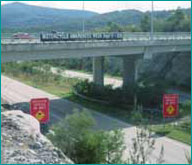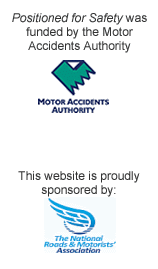Safety Co-ordination

The MCC objectives for Safety Co-ordination are to:
- To ensure motorcycles are recognised as a growing and distinct mode of transport in all road planning and road safety programs.
- To include provision for motorcyclists in transport planning and facilities.
- To improve understanding, consultation and communication between government agencies and the motorcycling community.
- To improve the public image and acceptance of motorcyclists.
Motorcycles as an emerging transport option
Motorcycles and scooters are the fastest growing sector of road users in NSW. They are a convenient, cheap and fun solution to traffic congestion and parking. They also have a small environmental footprint in terms of manufacturing, fuel usage, emissions and road space.
Despite their advantages, motorcycles tend to be overlooked by road and transport planners in Australia. The NSW Government did not even mention motorcycles as a transport option in the Sydney Metropolitan Strategy. The NSW Department of Planning does not count motorcycles as a separate form of motorised transport in their Household Travel Survey reports.
Australian transport planners tend to work from European models and to focus on walking, cycling and public transport as the sole alternatives to motor vehicles. They fail to recognise cycling and walking as relative luxuries only available to those who can afford to live within a reasonable distance of their destinations. This is particularly an issue in Australia where urban sprawl, climate and geography place limitations on the viability of walking or cycling, and where public transport has been allowed to decline over decades.
Funding motorcycle safety
Motorcyclists are second only to pedestrians as a proportion of fatalities and injuries, but government expenditure on safety programs for vulnerable road users does not reflect their relative injury risks.
Pedestrians and pedal cyclists have formed effective lobby groups and governments have provided funding for engineering and educational programs to improve their safety. Motorcyclists have not been as effective in promoting their cause. Motorcyclists represent 8% of all road users injured compared to pedestrians (9% ) and cyclists (5%).
In the financial year 2006, the NSW government allocated $7.8 million for pedestrian and urban amenity programs and $5.6 million for bicycle programs. By comparison a total of only $1.5 million had been spent on motorcycle safety across the preceding three years.
There is perhaps some irony that while road authorities spend many millions on facilities to encourage and protect pedestrians and pedal cyclists, little is spent on the only one of the vulnerable road users who actually pays road tax.
In order to make motorcycling more acceptable as a means of transport it has to become safer, and be perceived as safer. This will require change in four broad areas. Motorcyclists need to be:
- Accommodated in the design and maintenance of the road environment
- Included in transport planning and facilities
- Identified as vulnerable road users with special needs
- Included in crash research and safety monitoring programs.
-
Crash Investigation
It is apparent that we do not know enough about the causes of many motorcycle crashes. It is too easy to simply blame the rider without reviewing the other contributing factors. Any crash results...
-
Public Policy
NSW Motorcycle Consultative Committee Until recently, the NSW Government consulted with motorcyclists through the NSW Motorcycle Consultative Committee, which met every 6 months. The Committee was...
-
Public Image
Motorcyclists have long suffered from a poor public image, which is derived from old stereotypes and perpetuated by the media promoting fear and mistrust. There is now evidence that the promotion of...
-
MCC Strategies
4.1 Motorcycles are not recognised as a separate class of vehicle for road safety policy, or for traffic management and transport planning. 4.1.1 MCC to work with other stakeholders for research...

